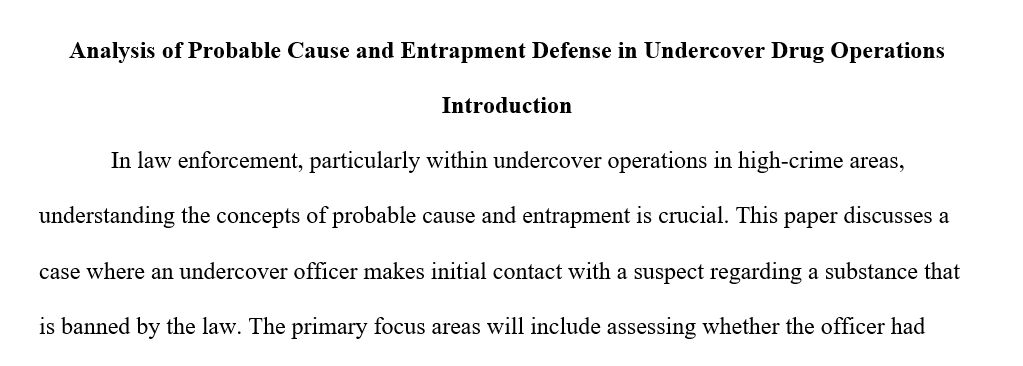Working an undercover detail in a neighborhood known for drug activity
While working an undercover detail in a neighborhood known for drug activity, you notice a vehicle stopped at the intersection waiting for the light to change. The man in the vehicle makes eye contact with you. You approach his vehicle and begin carrying on a conversation with him. You ask him whether he needs anything, and he responds by asking, \\”What do you have?\\” You ask him what he is looking for, and he tells you that he is looking to score. You show him a small bag containing a white powdery substance; he asks how much, and you respond, \\”20 dollars.\\” He hands you a $20 bill, and you give him the bag and tip your hat to signal that the transaction was completed. At this time, the man drives off and is stopped a block away by a marked unit. The individual is placed under arrest for drug possession and purchasing drugs, and he is taken to jail.
The individual is charged with possession of a controlled substance. At his trial, he claimed that he was a victim of entrapment by the police. His claim of entrapment failed. He was found guilty and sentenced to serve 5 years in jail.
In a 3–5-page paper (not including the cover and reference pages), address the following:
- Did you have probable cause to approach the defendant while he was parked at the traffic light? Why or why not? Defend your answer.
- Was the entrapment defense valid in this case? Why or why not? Defend your answer.
- Is providing the opportunity for someone to commit a crime the same as entrapment? Why or why not?
- Research and summarize 2 Supreme Court decisions that specifically address entrapment. State the title of each case (e.g., Hampton v. United States). Summarize both cases in paragraph format.
- The following are suggested cases for review:
- Read about the Hampton v. United States case.
- Read about the Jacobsen v. United States case.
Please submit your assignment.
For assistance with your assignment, please use your textbook and all course resources.
Individual Project Rubric
The Individual Project (IP) Grading Rubric is a scoring tool that represents the performance expectations for the IP. This Individual Project Grading Rubric is divided into components that provide a clear description of what should be included within each component of the IP. It’s the roadmap that can help you in the development of your IP.
Unit 3 Grading Rubric
| Total Points | Comments | Score | |
| Explain if the officer had probable cause to approach the defendant while parked at the traffic light and justify your answer. | 30 | ||
| Apply your understanding of entrapment and explain if entrapment is a valid defense in this case and support your reasoning. | 30 | ||
| Demonstrate your understanding of entrapment by answering if the opportunity provided to commit a crime is the same as entrapment and justify why or why not. | 25 | ||
| Briefly summarize two Supreme Court cases that address entrapment, i.e., the Hampton v. U.S. and Jacobsen v. U.S. cases. | 30 | ||
| Mechanics, grammar, APA, and professional language: The assignment contains accurate grammar, spelling, and punctuation with few or no errors. (APA formatting or the style specified in the assignment is required.) | 10 | ||
| Total Points Possible | 125 |
References
Oyez. (n.d.a). Hampton v. United States. https://www.oyez.org/cases/1975/74-5822
Oyez. (n.d.b). Jacobson v. United States. https://www.oyez.org/cases/1991/90-1124
Requirements: 3 to 5 pgs
Answer preview to Working an undercover detail in a neighborhood known for drug activity

APA
1461words